- News
- Reviews
- Bikes
- Components
- Bar tape & grips
- Bottom brackets
- Brake & gear cables
- Brake & STI levers
- Brake pads & spares
- Brakes
- Cassettes & freewheels
- Chains
- Chainsets & chainrings
- Derailleurs - front
- Derailleurs - rear
- Forks
- Gear levers & shifters
- Groupsets
- Handlebars & extensions
- Headsets
- Hubs
- Inner tubes
- Pedals
- Quick releases & skewers
- Saddles
- Seatposts
- Stems
- Wheels
- Tyres
- Tubeless valves
- Accessories
- Accessories - misc
- Computer mounts
- Bags
- Bar ends
- Bike bags & cases
- Bottle cages
- Bottles
- Cameras
- Car racks
- Child seats
- Computers
- Glasses
- GPS units
- Helmets
- Lights - front
- Lights - rear
- Lights - sets
- Locks
- Mirrors
- Mudguards
- Racks
- Pumps & CO2 inflators
- Puncture kits
- Reflectives
- Smart watches
- Stands and racks
- Trailers
- Clothing
- Health, fitness and nutrition
- Tools and workshop
- Miscellaneous
- Buyers Guides
- Features
- Forum
- Recommends
- Podcast
feature
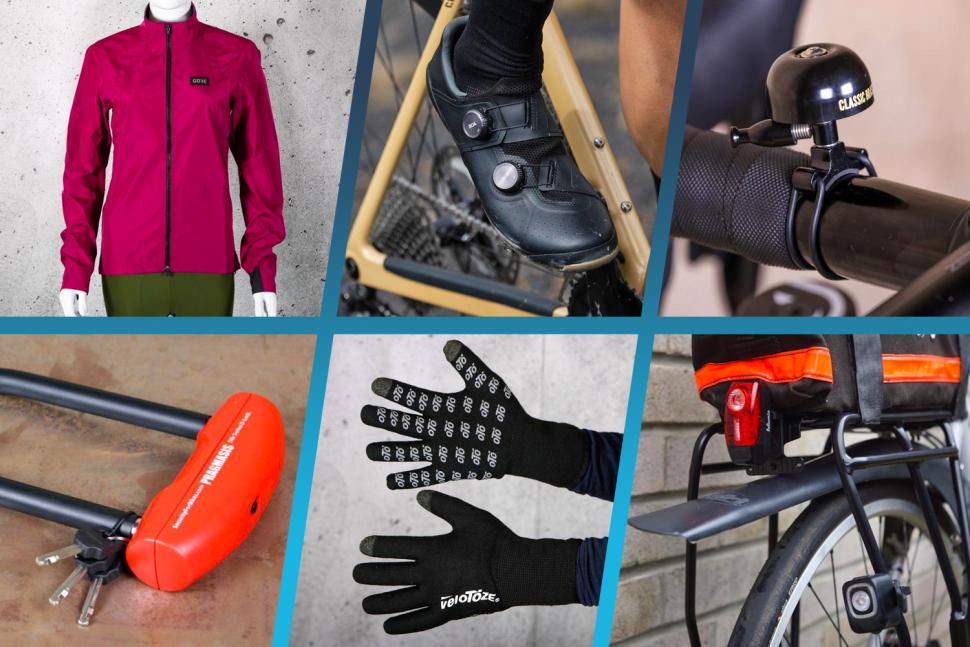 Your ultimate commuting kit list Sept 2024
Your ultimate commuting kit list Sept 2024Cycling to work, your ultimate commuting checklist — here’s everything you need to ride to work and back
Cycling to work isn't only a great way to save money and stay fit, it can also make your daily commute more enjoyable. If you’re ready to start commuting by bike, we’ve put together the ultimate kit list to help you ride comfortably, efficiently and safely.
It can be difficult to know where to start when it comes to commuting to work by bike, so we've broken down everything you need into two categories: essentials and desirables. This guide covers all the basics you'll need to get you to work and back, as well as some upgrades you might want to consider later down the line. For a more general guide to cycling to work you can also check out our beginner's guide, but if you're here specifically to nail down your equipment then keep reading...
The essentials
These are the absolute must-haves and the basic items you'll need to get you started on your bike commute.
1. A bike (obviously!)
First things first, you can’t commute to work by bike without... well, a bike. It doesn't have to be the latest road bike on the market, as you can pick up a second-hand bike and save an absolute fortune as a starting point while you decide if regular commuting is for you.
There are plenty of places you can get a cheap second-hand bike. For starters have a look in your area for a local second-hand bike workshop. It won’t be the cheapest place to buy a bike, but it can take a lot of the guesswork out of the process, and the bikes should have had a service before they’re put out for sale. It’s a great way to buy a second-hand bike if you’re not that savvy about fixing up bikes, because you can get advice on what you need.
If you're a bit more confident technically, then places such as eBay and Facebook Marketplace are full of bikes for sale, and some of them are real bargains. Wherever you find your bike you always, always want to see it in person before you hand over any cash.
To make sure you’re getting a good deal, be sure to check for worn-out components, broken frames, and be on the lookout for con artists or misdescribed items. Our guide on what to look out for when buying second-hand bikes offers more detailed advice.
Of course, you can always buy new, and if you want to keep costs down then look at past season models for discounts in bike shops and online. Whether you're buying new or second-hand, make sure the bike is going to be suitable for your journey to and from work. If it's all on Tarmac then a road bike might suffice, but you'll probably want some tough tyres and decent brakes to deal with winter conditions. The option to mount mudguards is worth considering, and some bikes come with rack and pannier mounts if you prefer this arrangement over a good old backpack.
If your journey is short and you prefer comfort over speed, then you might prefer a flat bar hybrid over a road bike. If in doubt, consult a good local bike shop and tell them what you'll be using the bike for to get some further recommendations.
2. Bike lights
The next essential on our list is a set of bike lights. Even if you rarely ride in the dark, having a good set of bike lights is a smart idea if you're cycling on the road.
When the nights draw in, you need to make sure you've got a set of lights on your bike. It's the law in the UK and in many other places to run bike lights after dark, and they're a major safety aid about town. While you'll probably get the most use out of your bike lights in the winter months, it's essential to have a decent working set of lights to deploy year-round whenever the situation calls for them.
You’ll be happy to know that bike lights have made huge strides in recent years. Today’s rechargeable LED lights are a far cry from the old Ever Ready lights of the '70s and '80s. You no longer need to spend a fortune on batteries just to get a weak beam that barely lasts a couple of hours. However, there's a bewildering array to choose from, at prices ranging from a few quid to nearly a grand.
More general purpose front lights range from 400 to about 1000 lumens, with basic commuter lights and emergency lights weaker than that as they're mostly to be seen by, not to see with. For lights that help you see where you're going, aim for at least 500 lumens. However, for commuting in urban areas or for use on well-lit trails, 300 to 500 lumens on your front light should be sufficient.
The amount of lumens on rear lights is much lower because a red beam doesn't require as much power as a white one to burn brightly, so anything advertised as 20 lumens or above will do the job just fine at night. They are getting more and more powerful though, with something like the Lezyne Strip Drive 300+ pumping out a huge 300 lumens, but that's on the day flash modes. A much lower setting is fine for night-time.
3. A lock
There's nothing worse than stepping out after a long day only to find an empty spot where your bike used to be, so always lock your bike up in public places, and even in your office bike store.
We recommend investing in a high-quality bike lock with at least a silver, and preferably a gold, Sold Secure rating. These ratings indicate that the lock can’t be quickly broken. They’re generally not cheap, but you can find Sold Secure Gold-rated bike locks starting around £20, a modest investment considering it could save you from having to buy a whole new bike.
It's worth adding that unfortunately, if a thief really wants your bike and is equipped with an angle grinder then there are no locks that are completely impenetrable; but if your lock takes longer to cut through then it's more likely they will target another one, or get spooked/caught in the act and scarper. A lock isn't a guarantee against your bike being stolen, but a good one is a decent deterrent.
4. Waterproof jacket and a pair of gloves
Although there is no absolute right and wrong about what to wear when commuting by bike, there are two items we consider essential for your commuting wardrobe.
If you're commuting in the UK, chances are you'll encounter rain at some point during your commutes, whether it's in the forecast or not. So, one early purchase we highly recommend is waterproof gear, specifically a waterproof jacket. A quality waterproof can make the difference between a tolerable ride and a miserable ride, and prevent you from turning up to work soaked through.
The next essential item is a pair of gloves, and you'll want different types depending on the weather. Fingerless gloves are perfect for the summer, and are the most optional, as many cyclists prefer to go gloveless when it's warm enough. Thin long-fingered gloves work well for the spring and autumn months, and thick winter gloves are a must for when the temperatures really drop.
Fingerless cycling gloves aren't designed for warmth, but can provide protection if you crash, absorb buzz from the handlebar, help with grip and provide somewhere to wipe a runny nose. Some of the best winter cycling gloves will keep your hands both warm and dry, making your commute much more comfortable. No one wants to be stuck in the big ring up a climb because your hands are simply too cold to allow you to shift and change gear, which can actually happen.
Basically, don't make the mistake of cycling for any kind of distance longer than half a mile (ideally no miles) without gloves in the depths of winter. It will be brutal!
5. Inner tubes, tyre levers and a mini pump
If you're riding further than you're prepared to walk, it's very wise to carry a spare inner tube, tyre levers and a mini pump or CO2 inflator in case of a flat tyre. They are relatively inexpensive and small enough to easily fit at the bottom of your rucksack.
It's far better to carry these items and not need them rather than the alternative. road.cc staffers with appropriate, correctly inflated tyres have reported going a year or more of daily commuting with no punctures at all, but it's best not to chance it and risk a long walk/expensive cab journey home... and walking awkwardly too, if you wear cycling shoes!
6. Backpack or panniers
Unless you leave everything at the office, you'll need a way of transporting your essentials to work: your laptop and the like (complete with charger), some lunch, a rain jacket and perhaps some fresh clothes to change into at work.
Many people will opt for a backpack or rucksack, as you are likely to have one lying around, and while there are plenty of cycling-specific options available all backpacks can have the disadvantage of leaving your back damp and sweaty once you arrive at your destination.
Alternatives include panniers, which can be used individually or in pairs and attach to the bike via a rear rack (which may need to be bought separately), or a basket, or some other kind of carrying tray on the front of the bike. If you go with the tray option, it's also worth having a bungee cord or something similar to help secure any bag you are carrying.
The desirables
Next, we're going to cover some upgrades to enhance your setup as you become more committed to your daily commute...
1. A shiny new bike
After commuting by bike for a while on a budget model or the second-hand bike you found on Facebook Marketplace, you might decide it's time to upgrade to a more advanced new bike for your daily commute. If this is the case, check with your employer whether they are signed up to the long-running Cycle To Work Scheme.
Cycle to Work is a 'salary sacrifice' benefit. So, what does that mean? You make a saving by paying for the bike directly from your gross salary (before tax). Your income tax and national insurance are based on the lower figure, so the amount you pay is less. And while it has always been attractive to people who are planning to get a new bike, it is likely to be doubly attractive given the income squeeze.
The same rules obviously apply as our advice in the essentials section when buying new: make sure the bike genre and specification is suitable for the type of riding you'll be doing on your commute.
2. Cycling-specific clothing
Cycling-specific clothing is a matter of personal preference, but it can greatly enhance comfort and practicality, especially for those with longer commutes. For example, bib shorts are one of the most important item in a cyclist’s wardrobe, and you want a good quality pad (chamois) for comfort and moisture-wicking. Good cycling bib shorts start at about £40, and at the other end reviewed pairs that are priced at more than £250.
While arguably not quite as vital as some quality padded bib shorts, a cycling jersey can really help enhance your on-bike comfort. Cycling jerseys are made from breathable, moisture-wicking fabrics that can help keep you dry and comfortable by drawing sweat away from your skin. They also often feature pockets on the back for convenient storage for essentials like your phone, spare tube and snacks.
A lot of brands do also sell cycling specific garments that look much like 'normal' clothes, with brands such as Rapha having a long history of producing garments suitable for commuting or everyday cycling, as well as the more sporty clothes they are also know for, with cycling-specific touches such as hi-vis tabs and zips on pockets to keep your valuables safe.
3. Fit mudguards
> Is a gravel bike the ultimate winter bike?
Getting caught in the rain is bad enough without also dealing with the spray from the roads soaking you from below. Fitting some mudguards can make your commute to work a much more pleasant experience in wet and changeable weather - and that's much of the time in the UK - by preventing a lot of the spray created by your tyres from turning you into a soggy mess.
If you've never used mudguards, you’ll probably be surprised at how much difference they make. A lot of the water that covers you when you ride in the rain doesn’t come directly from the clouds, it’s thrown up from the road surface by your tyres, especially in lovely British drizzle.
Full-coverage, bolt-on guards are the most effective option on any bike that can take them, but if your bike lacks mudguard eyelets, there are lots of options from full-length guards designed to squeeze into the limited space, to clip-ons that at least keep your bum drier.
4. More durable tyres
> 8 upgrades I've made to my road bike to make it better than a new one
Here at road.cc we believe that tyres are one of the most cost-effective upgrades you can make to a bike.
The only thing that connects your bike to the tarmac is the tyres, so getting the right ones for your riding is crucial. With new tyres, you can improve grip in crappy weather, go a bit faster, add some much-needed comfort or simply reduce your risk of puncturing.
For your commuting bike, investing in wider, more durable tyres can offer substantial benefits. Wider tyres not only provide added comfort but also enhance stability. Additionally, more durable tyres are generally more resistant to punctures, making them ideal for varying road surfaces.
5. A bell
If your commute takes you through busy or shared spaces, adding a bell to your bike is a great way to alert pedestrians and other cyclists of your presence.
While a bike bell is not a legal requirement in the UK, it can be a useful tool for giving a friendly warning of your approach. We favour a pleasant tone and the option to have the bell sound constantly.
There's a huge range out there, from tiny, cheap pingers to pricey titanium ones. You can even (allegedly) get an aerodynamic bell!
6. Bike computer
Cycling computers, particularly those that have GPS technology, have helped to open up a wide range of possibilities and change with regards to recording, planning and comparing bike rides. A cycling computer can help you track your commute as it helps you monitor metrics like distance, speed, and time, which can add a competitive edge to your commute as you strive to set personal bests - safely, of course.
Cycling computers can also make following a route easier and hassle-free, thanks to bigger, more visible colour screens. With built-in GPS, they can assist in finding the most efficient path to work, exploring new routes, or extending your commute.
Additionally, speaking of bike bells, some advanced models such as the new Garmin Edge 1050, features a built-in speaker that can act as a bike bell.
7. Cycling shoes
While you could cycle in a pair of trainers, cycling shoes can be a more comfortable and efficient upgrade. Cycling shoes have stiffer soles than, say, trainers or running shoes, which makes them more comfortable to pedal in. You can pay hundreds of pounds for high-tech shoes with carbon fibre soles, but you can get perfectly usable shoes for under £100.
There are broadly two types of cycling shoes: road racing style and SPD/mountain bike style. When you're new to cycling, the world of bike-specific shoes can seem daunting and confusing so you can check out our beginner's guide to cycling shoes.
Mountain bike shoes feature a recessed pocket for the cleat, so they are easier to walk in and because the pedals are usually double-sided, they're easier to get into.
Road cycling shoes have stiff, smooth soles that tend to be better for power transmission, with threaded holes for a cleat that stands proud from the shoe and fits into the attachment mechanism on a matching pedal.
You can also find cycling shoes that resemble casual trainers, designed to be practical both on and off the bike, while still featuring SPD-compatible cleats for clipping into pedals. Examples include the CHPT3 Transit Cycling Shoe and the Adidas Velosamba SPD cycling shoes.
What are you commuting kit essentials? Let us know in the comments section below.
Emily is our track and road racing specialist, having represented Great Britain at the World and European Track Championships. With a National Title up her sleeve, Emily has just completed her Master’s in Sports Psychology at Loughborough University where she raced for Elite Development Team, Loughborough Lightning.
Emily is our go-to for all things training and when not riding or racing bikes, you can find her online shopping or booking flights…the rest of the office is now considering painting their nails to see if that’s the secret to going fast…
Latest Comments
- Rendel Harris 2 sec ago
As I understand it, the maintenance track beside the busway is and always has been designated a bridleway so it was in fact always a route that...
- don simon fbpe 50 min 58 sec ago
I'd go for 'the sun was in my eyes' as a defence, get away with murder with that one...
- PRSboy 2 hours 34 min ago
I have two aero bikes- an Argon18 Nitrogen and an Orro Venturi. I love the way they feel on the road. I also like the style of the deeper section...
- ridein 4 hours 31 min ago
I wonder if you could use a Northwave shoe (w/Speedplay drilling) on the Ekoi pedal. Possibly using one Look pattern cleat hole and two Speedplay...
- Rendel Harris 10 hours 11 min ago
They have here: results at 14.40. The aero bike was roughly fifteen seconds faster than a climbing bike on a descent of around 6 km, so about 3km/h...
- wtjs 10 hours 25 min ago
As I've also placed here the nutter Audi and white van drivers, I've decided to give those no-nonsense keep-the-country-moving BMW drivers a list...
- polainm 11 hours 28 min ago
100% this. Policing mentality is formed by social 'norms', and the cyclist witchhunting across social media is the UK norm. Close passing a person...
- David9694 12 hours 53 min ago
That's a clear 2 points awarded there, but I guess as there's now a 25% tariff you'll only get 1.5
- mark1a 13 hours 4 min ago
Fawkes Cycles is only local if you live near Oldham. That's nearly 300 miles away from me. Also, any retailer that doesn't participate in an...
- David9694 13 hours 6 min ago
Openreach under fire over delays to Amesbury cabinet repairs...
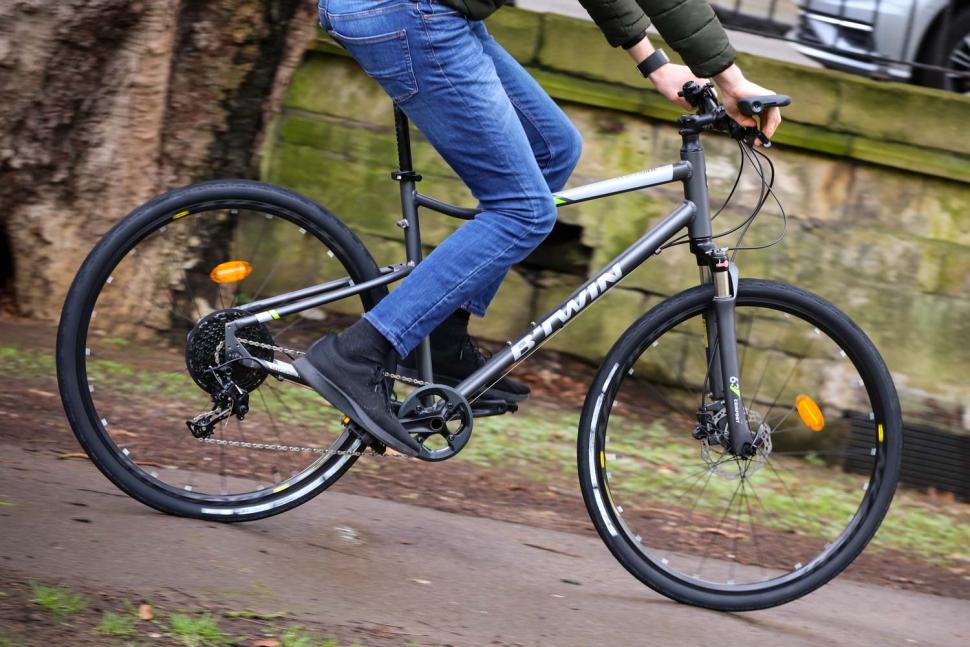


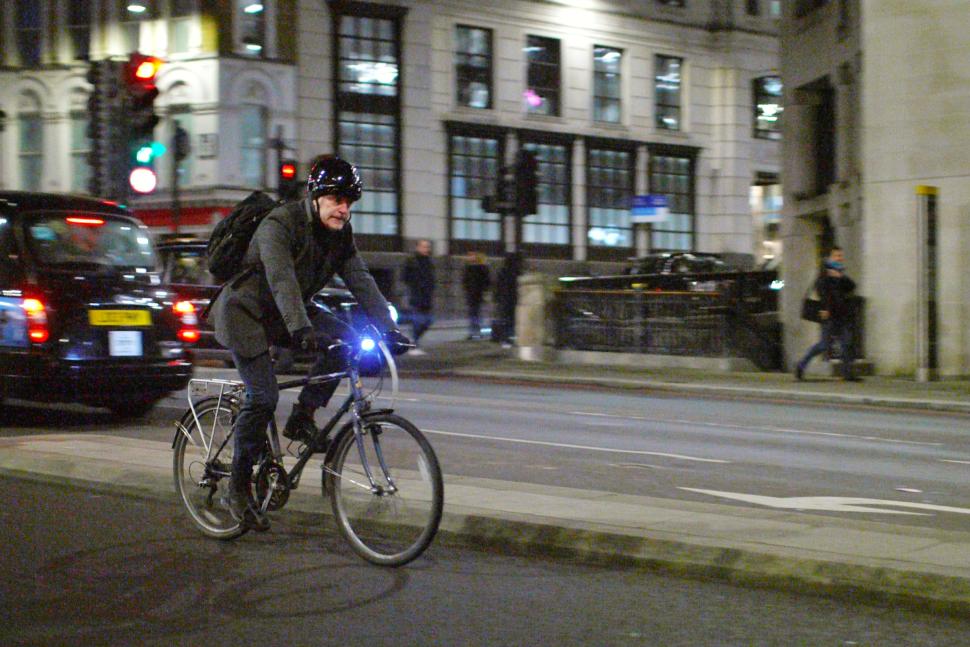


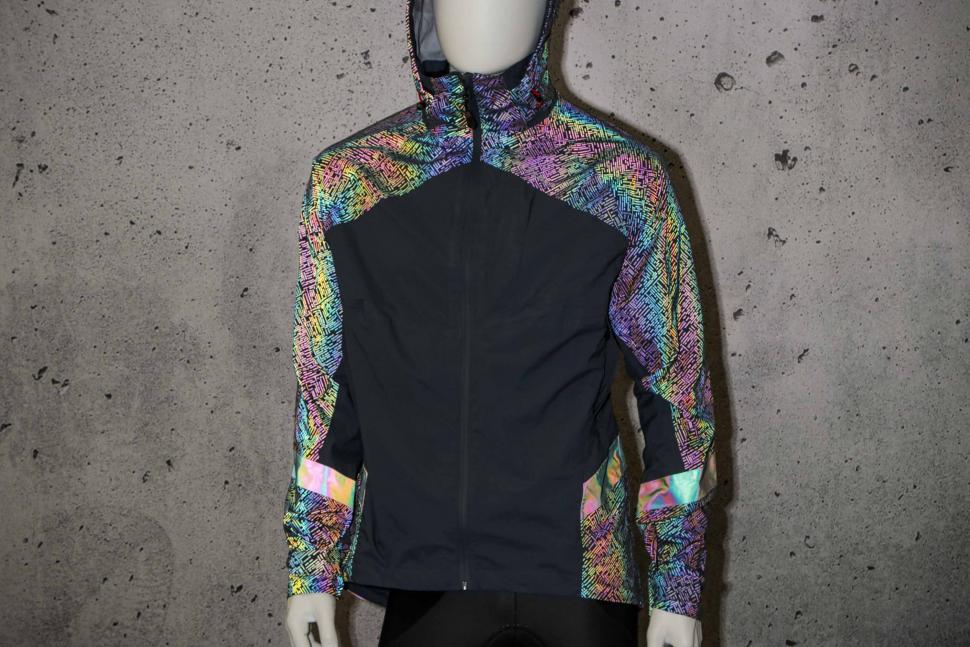



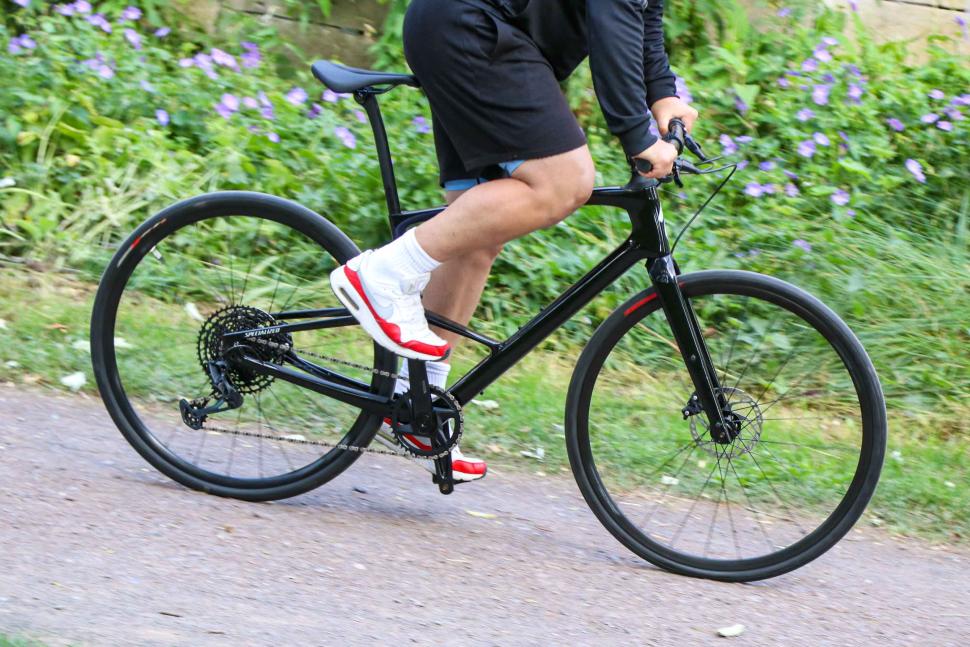

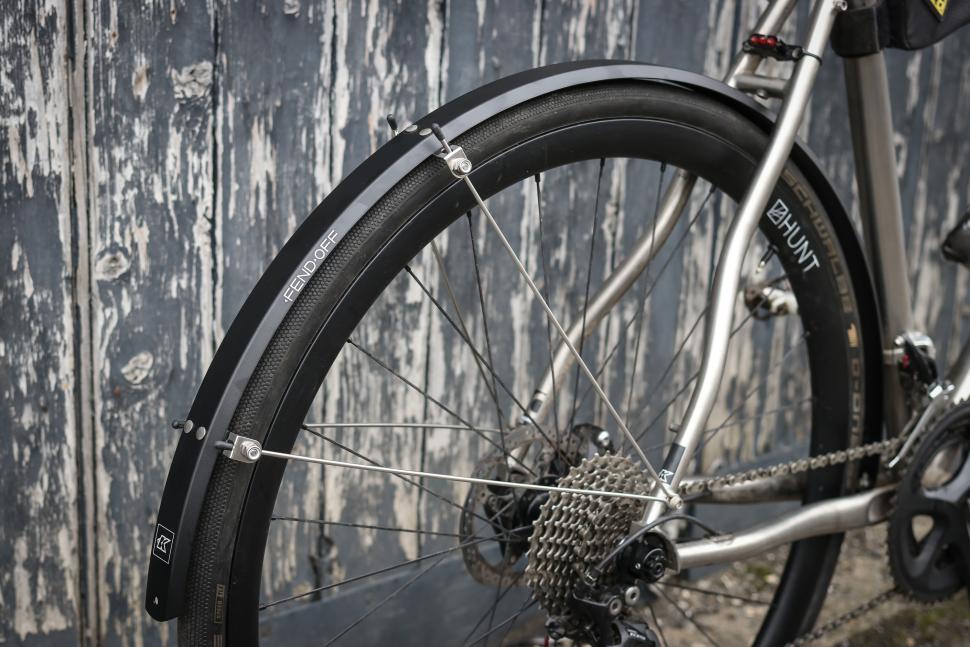
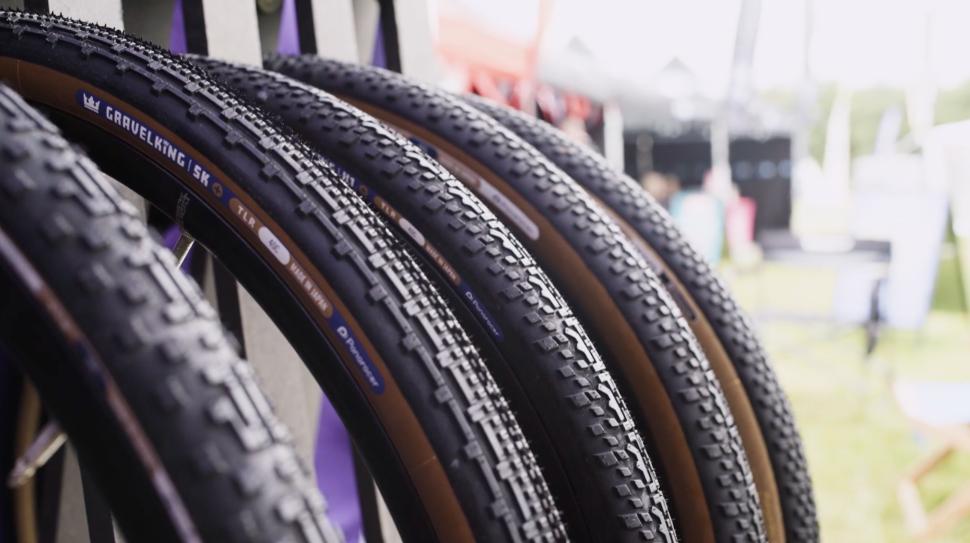

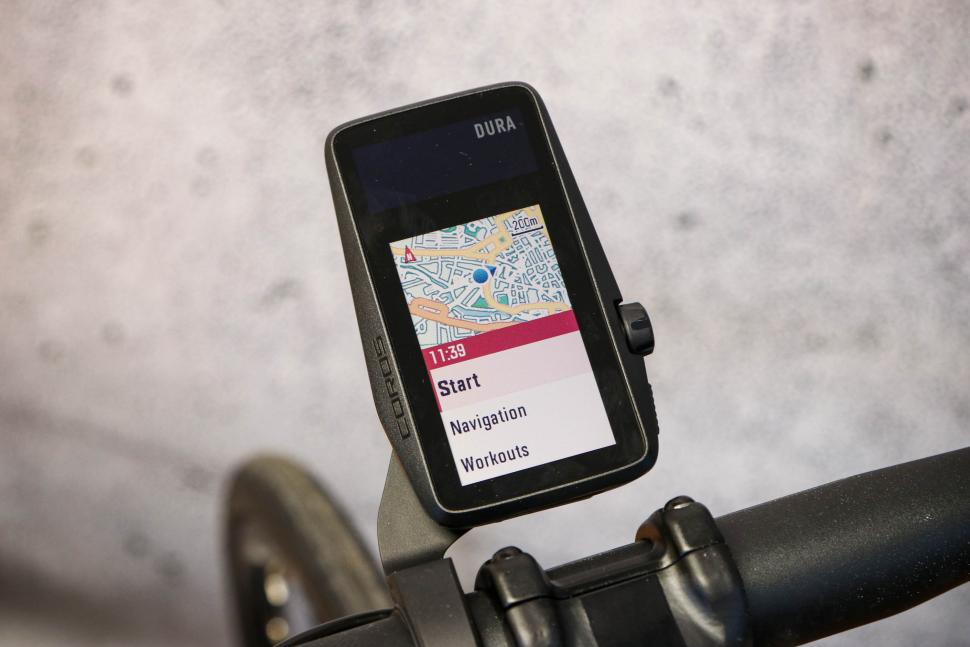
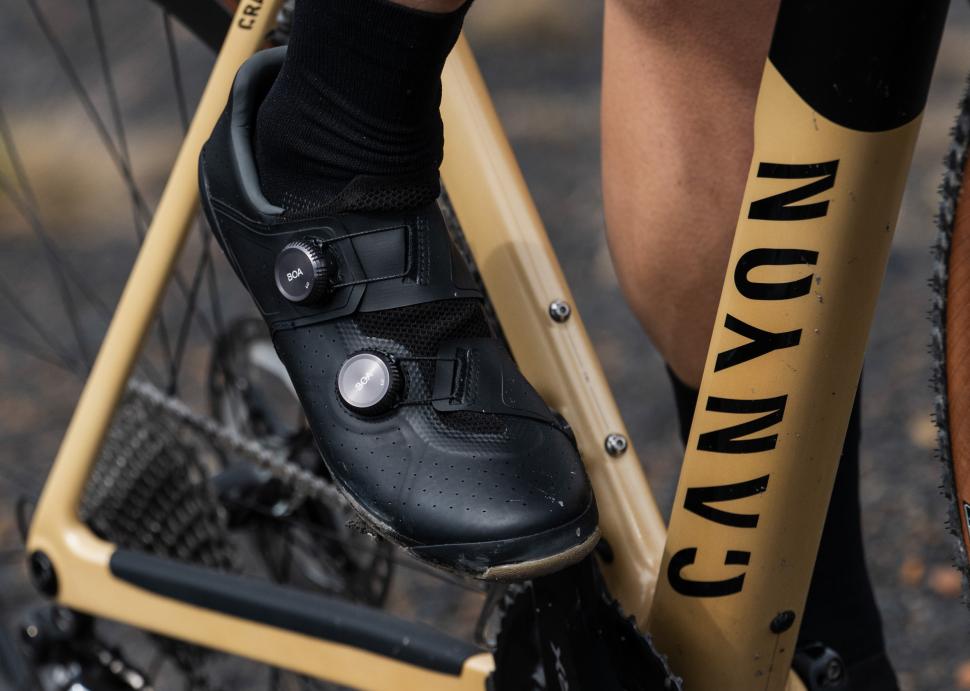
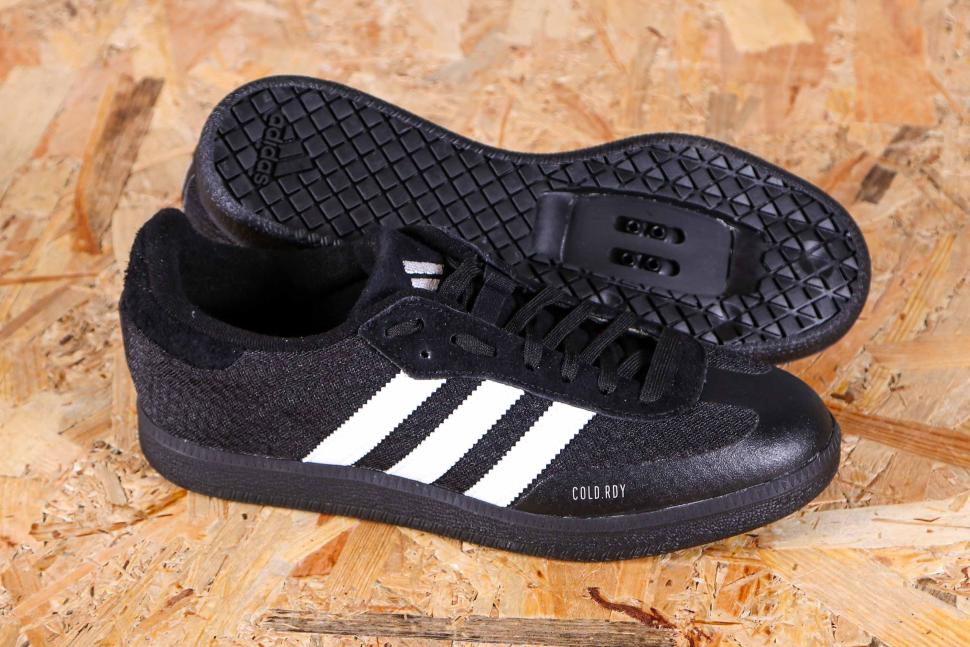
Add new comment
30 comments
If I count my first trips cycling to school then I've been bike commuting for 45 years....and still learning. Apart from the obvious stuff my tips would be:
Essential:
-Bike that suits the distance, terrain, environment etc your cycling; if you must cycle an MTB for a long tarmac commute, at least swap out the knobbly tyres. I prefer a flat-bar bike in town; you can stop faster (noting you'll meet the worst drivers) and I'm more 'heads-up' (awareness). Even an e-bike; that's what lots of continentals use (leave the sport cycling to weekends).
-Full length Mudguards. Saves you and your bike, as well as your fellow bike commuters, from getting covered in road sh*t; you could even wear normal clothes on damp roads. No permanently stained kit and less bike washing.
-Bell. If you cane past a pedestrian on a bike path having given them a polite 'ding' you won't get any flak; sometimes you get a thank-you.
-Decent tyres. Best lightweight puncture resistant tyres available (spend big!). I remember the week 25 odd years ago, when tyres were cr*p, where I had 5 punctures in 1 week.
-Good locks. London standard used to be a D-Lock and a cable lock; thief needs a grinder and a bolt cropper to get them off so may well go elsewhere.
-Zen attitude - if you let bad drivers wind you up, you'll end up in therapy. You'll probably overtake them when they join the back of that monster queue; payback.
-Reflectives - you'll stand out better in the dark; even against the all in black cyclist with the best lights money can buy.
-Day time flashing light - perhaps just me but since I started using one I feel I get noticed by drivers more.
-Nod/wave/smile/raised hand to fellow bike commuters; it's a tribal thing.
-Road positioning. Don't hide in the gutter.
Nice to have/do:
Disc brakes - better stopping power and your wheels stay clean.
Cameras - yes you can report those close passes, but it may well mean that if you get taken out by a car then the evidence is clear cut.
Rack - personal preference but heavy rucksacks become a bore on a long commute.
Warm gloves - not much fun spending your first 5 min at work with your hands stuffed in your armpits.
Take that slightly longer quieter route - mega busy A roads; no thanks.
-At home, keep your bike accessible and ready to go; less faffing.
Take a trip to Copenhagen, Amsterdam or Berlin, for example; see how amazing bike commuting could be.
...and don't stop, even for winter, you'll be fitter and richer for it. There's no such thing as bad weather, just bad kit.
My experience - yes, use a bell, but be prepared for it to make them jump, turn around, deviate from their line and wobble into your path. So caning still not advised.
It's a (long) while ago now, but I spent the best part of 20 years communting all year round in the "sunny, dry conditions" of Lancashire (ha!). Everyone absolutely has the right to their own preferences and opinions, but mine would be:
Priorites are lights, pannier bags (containing a basic tool/puncture repair kit) and a rack (as quite apart from the discomfort of riding wearing a rucsack, I never liked the idea of raising my centre of gravity using one), mudguards, an everyday wet weather jacket, and robust tyres.
I always rode in everyday trainers, t-shirts and shorts; even if I'd wanted them I'm not sure I could have afforded a daily change of cycling-specific wear!
Thinking back though, even the warmth of nostalgia can't quite remove the memory of those mornings cycling to work with ice forming in the beard!
I think I started bike commuting around 2002 on Irish roads (Dublin) and I never got a p'ture until 3 years later when I started carrying a repair kit and Sh1tty UK roads. Touch wood I'll only p'ture occasionally and found it to occasional for glue which would always go hard and/or p'ture its self. I prefer to use a spare tube these days and in the very rare occasion of a double p'ture (I dont think its ever happened on the commute, just leisure once) I carry Park self adhesive patches.
I would be tempted to say mudguards are at least as essential as a rain jacket. A rain jacket helps if it's actively raining; mudguards help if the road is wet. The road is wet far more of the time than it is actively raining. Anytime it is actively raining the road will be wet, but the road will also be wet anytime it's been raining recently (or, in winter, not-that-recently). In addition, the road might also be wet if someone has been watering their plants, or washing their car, or there's a leaking water main, or any number of other reasons.
Especially in winter, you can often dodge actual rain showers by timing your ride correctly, but it's nigh on impossible to avoid wet roads and road spray.
I would wholeheartedly agree. Whilst you may be tempted to add or remove them for recreational riding, commuting in all weathers means extra steps are additional insurance for getting caught out by any changes or unexpected downpours.
After starting with them on my commuter, I am a total 'guards convert and keep them on the road bike all year. On the Dragon Ride a number of years ago, someone made a quip about me having guards on during the summer - "expecting rain are you?!" "You're obviously not from round here" I replied, while passing him up the Rhigos.
Interesting that the lock pictured is discontinued.
I find it's good to leave some essentials at work. Another spare tube, a slow repair kit (one with rubber solution, quick one in the bag, naturally), a mini floor pump or at least one that's better than the carry mini, and some light chargers.
It's a shame Pragmasis are going - I only came across them relatively recently, but I really liked their ethos. Although I'm not entirely suprised either - as I said, I only recently came across them and I've been cycling for many years and so they clearly never got on top of marketing or distribution.
Whilst we're on locks, I would add:
I would probably recommend anyone buying a new lock buys an angle-grinder resistant one nowadays. Not sure who was first to market (Hiplok or Lite Lok?), but now most of the main brands have at least one option (the aforementioned plus Abus, OnGuard and Squire. Kryptonite seem to be the only main player without one). Personally I went for the Lite Lok X1 - it's not the most heavy duty, but it's still significantly better than any non-angle-grinder-resistant D-lock, and is the cheapest, lightest option AFAIK. And it has decent interior dimensions, which makes proper locking easy.
On proper locking, I would suggest as a minimum putting the (angle grinder resistant) D-lock through the rear wheel, frame (ideally seat tube, but seat stay or chainstay work too) and bike rack (or other immoveable object). I see a lot of bikes with the D-lock just around the top tube onto the bike rack, which is ok but has a lot of vulnerabilities that including the wheel too avoids. The slight adjustment in technique to include the rear wheel adds a little bit of faff, but significantly increases security. In addition to simply securing the rear wheel (which is a good thing), this locking technique fills more of the space in the lock (making it harder to insert a jack or similar), makes it harder to manoeuver the bike to move the lock (a thief might want to get the lock on the ground for leverage or for a hammer attack), and means if the thief cuts or otherwise attacks the bike rack rather than the lock, they still can't ride the bike away. I have even heard stories of thieves cutting the top tube of a bike to steal it - they might ruin the frame but can strip and sell everything else, and again locking the wheel too means the thief has to cut both the wheel and the frame, which adds difficulty and renders the bike entirely unrideable. In short, with this locking technique it becomes a PITA for the thief to get anything much of value without directly cutting the lock which, with a good, angle grinder resistant lock, is not an especially attractive proposition for a thief. It's not perfect (a thief could still take front wheel, saddle, various other components; if they have a van they could still cut the rack and carry off the bike etc.) but if you're already carrying a good d-lock, this technique costs nothing, adds no weight, is relatively straightforward and so seems like a no-brainer for the increase in security offered. Any other locking options are either a lot more faff (e.g. removing the front wheel each time) or require more locks (adding cost and weight).
Something like this.
Not sure I'd risk riding off with just a cut in the top tube either TBH. But then I don't have a thief's mindset.
One thing I find particularly useful to carry in the toolkit is a pair of latex gloves (or just a pair of the plastic ones you can get for free at petrol stations) so that any running repairs can be done without having to waste time when you get to work scrubbing oil off your hands and trying to get road crud out from under your fingernails; also in summer when you're gloveless/wearing fingerless gloves they stop your expensive bar tape getting covered in oil and gunk. Additionally if your hands start to get cold they can be slipped on as emergency inner gloves, they may make your hands sweat a bit but better than being cold.
I'd regard a multi-tool as essential. I also like to carry a small first aid kit.
I'd consider a camera as desirable (essential if the drivers in your area are particularly incompetent). Insurance is worth considering if your home insurance doesn't cover your bike.
Pretty sure this should read 'about a hundred pairs of gloves'.
Or is that just me?
FTFY
That's because you're trusting your feelings on the day rather than working out a clothing-as-function-of-temp scheme and sticking to it, maybe?
I spend far too much time time dithering and checking the Met Office and other temperatures to help choose my clothing. A temperature-based guide will reduce the options a bit but I still sometimes take multiple pairs of gloves. Sometimes it feels colder than the thermometer while sometimes on longer rides (including 'the long way home' commutes) what's adequate at the start can get too hot and clammy after 40 minutes or so.
My commuting essentials (beyond the obvious) include: Schwalbe Durano DD tyres; cycling cap for cold and/or wet conditions; arm warmers for in-between temperatures; clear & tinted Bolle safety specs (£12 each); toe covers or overshoes if there's even a slight chance it could be wet.
I really like the idea of SPD winter boots but am put off by spending big then finding out that they aren't all they're cracked up to be. I bought a very lightweight 15L Deuter rucksack but it's not even slightly waterproof and doesn't hold that much so I'll choose differently when I eventually replace it.
In the early days I didn't spend enough on lights. Now the Lezyne 800 front and Cateye Viz rear, combined with spoke & Shimano PD22 pedal reflectors, seem to do a good job of helping me be visible.
If all that seems complicated, I should add that my daughter commuted 5 miles each way to college for 4 years with a Cateye 200L front light, a £10 Smart rear light and cheap rucksack, with some ski gloves for the cold days. She wears cheap trainers (well, floppy pumps) and uses flat pedals, though she also rides at 1/3 to 1/2 my pace.
I have a pair of SIDI winter boots and I love them, keep me warm and dry in nearly all conditions, but to be honest so do a pair of £20 neoprene overshoes with normal shoes, though they are more of a faff taking on and off.
Yeah, this. Also on longer rides you can have the "all seasons in one day" phenomenon, or pass through very different weather phases, so I rarely find a goldilocks outfit.
Gilet/rain jacket/undershirt stuffed in a back pocket?
And then put it on. And then in a back pocket. And then on. And then...
But yes, I do. Or I find a Gabba is a one-layer solution which covers a lot of eventualities, at least in the shoulder seasons.
But I reckon that once you are warmed up then how a particular temperature feels is fairly constant, whereas how you feel when you poke your nose out of the door is anything but.
It has been 7 or 8 C in the morning and 17 or more in the evening commute a few times recently. In terms of my clothing choices that's a big difference.
I've stepped out of the door plenty of times thinking that it's quite mild and found that it's colder than I thought and almost shivering for the first 20 minutes or so (it's sheltered in the estate but along the country lanes it's open and I'm often riding into a W/NW wind for the first few miles). No amount of positive self-talk will warm my hands up in those conditions.
They run into a bit of money and I understand why some people don't want another thing to charge, but I find my Sealskinz electrically-heated gloves a godsend in terms of adaptability: they are a good sturdy pair of warm gloves without the heating facility so I start wearing them when morning temperatures are around 6° and then if it's colder than I thought I can just turn the heating on at whatever one of the three levels feels best.
Are cycling shoes and a computer really? I have them myself but I'm not going to tell my colleagues that they can't cycle anymore because they haven't got them.
There are two parts to the list - essential and desirable. They're in the second part.
My bad, I missed that on my tiny phone, yes they are desirables
Shoes I suppose is dependent on whether or not you intend to use clipless pedals or not. The bike I primarily use for commuting also doubles up as a shopping bike and my winter recreational bike (once removing panniers), so to save faff of swapping pedals I just use MTB Shimano SPD pedals year round. For commuting I have an old pair of "winter" boots with water proof membrane so that if I do get caught out in adverse weather I am not getting cold and wet feet. For recreational use I use my normal XC Gravel shoes and a pair of shoe covers if there is any potential downpours.
Another option is to use dual sided pedals such as Shimano PD-EH500 or XT T-8000 that have an SPD mechanism on one side but are flat on the other, so you can choose between cycling shoes and normal shoes as the ride type/weather conditions dictate.
I use the XT T-8000 - amber pedal reflectors are mandatory after dark in the UK, although I've never heard of anyone being called out for not having pedal reflectors if otherwise well lit.
I had forgotten about those style of pedals. I'm not sure about the reflectors being amber, specifically. But I do tend to wear reflective snap bands round my ankles if riding after dark. Studies have shown that dynamic placing of reflective and flourescent high visibility materials increases conspicuity better than having them in a more static area, such as on the torso. Even then, with full panniers I doubt my pedals and/or ankles would still be in view from directly behind me.